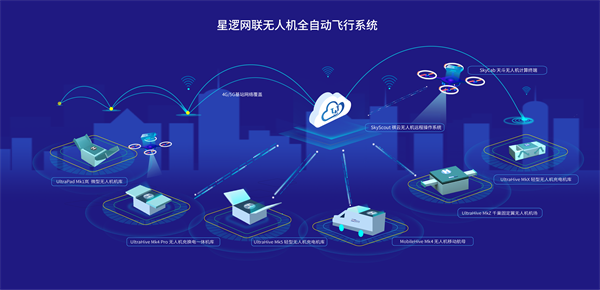
Introduction: With the rapid development of photovoltaic power generation technology, the scale of photovoltaic power stations continues to expand, and photovoltaic operation and maintenance have become an important issue. The traditional manual inspection method is time-consuming, labor-intensive, and inefficient, while fully automated unmanned aerial vehicle systems have many advantages in photovoltaic operation and maintenance. The advantages in safety, efficiency, and accuracy can provide strong support for the operation and maintenance of photovoltaic power plants. With the continuous development and improvement of drone technology, it is believed that it will play an increasingly important role in the field of photovoltaic operation and maintenance.

Note: Only basic equipment information is recommended, details can be consulted!

Firstly, one of the biggest advantages of fully automated unmanned aerial vehicle systems in photovoltaic operation and maintenance is their improved safety. Photovoltaic power stations are usually distributed in vast areas, some of which have steep terrain and harsh environments, posing certain safety risks. Manual inspectors need to climb dangerous areas such as ridges and cliffs for inspection, which can easily lead to accidents. The drone system can be remotely operated to keep personnel away from hazardous areas, reducing the occurrence of accidents. In addition, the drone system is equipped with high-definition cameras, infrared thermal imagers and other equipment, which can detect abnormal situations in a timely manner, provide early warning, and ensure the safe operation of the photovoltaic power plant.

Secondly, another advantage of fully automated unmanned aerial vehicle systems in photovoltaic operation and maintenance is their improved efficiency. Traditional manual inspections require a significant amount of time and human resources, while drone systems can achieve round the clock, all time inspections. It is not limited by natural conditions such as weather, and can quickly cover the entire photovoltaic power plant area, greatly reducing inspection time. In addition, the drone system is equipped with intelligent functions such as autonomous flight and path planning, which can automatically find the best inspection path, reduce idle time, and improve work efficiency.

Finally, the third advantage of fully automated unmanned aerial vehicle systems in photovoltaic operation and maintenance is their improved accuracy. The operation and maintenance work of photovoltaic power plants usually includes tasks such as identifying faults, locating problems, and repairing damaged equipment. Traditional manual inspection methods often only detect surface issues and cannot conduct comprehensive inspections inside the equipment. The drone system can comprehensively monitor and detect key equipment such as solar panels and inverters in photovoltaic power plants through high-definition cameras and infrared thermal imagers. It can capture minor damages, temperature anomalies, and other issues, helping operation and maintenance personnel to timely detect and solve potential faults, ensuring the efficient operation of photovoltaic power plants.

Recommended product: SKYSYS Mk4 Pro Charging and Switching Integrated Hangar
Power supply: 220V mains power
Power consumption: 2300W peak+350W standby
Product weight: 790kg
Maximum load: 60kg
Single assignment time: 30 min
Daily attendance frequency: 10-30 times
Wind protection level: 6
Product size: 2.1 * 1.73 * 1.6m
Recommended compatible model: DJI M350
Recommended software: SKYSYS PV INSPECTOR AI Inspection Software
In summary, although fully automated unmanned aerial vehicle systems have many advantages in photovoltaic operation and maintenance, they also face some challenges. For example, the operation of drone systems requires professional skills and relevant qualifications, and requires training of qualified operators; The high cost of equipment and maintenance is also an issue that cannot be ignored. In addition, the data processing and analysis of drone systems also require advanced technology and algorithm support. Therefore, before introducing fully automated unmanned aerial vehicle systems, their applicability and economy should be carefully evaluated to ensure that their advantages can be fully utilized.
Recommended departments: Photovoltaic power station






